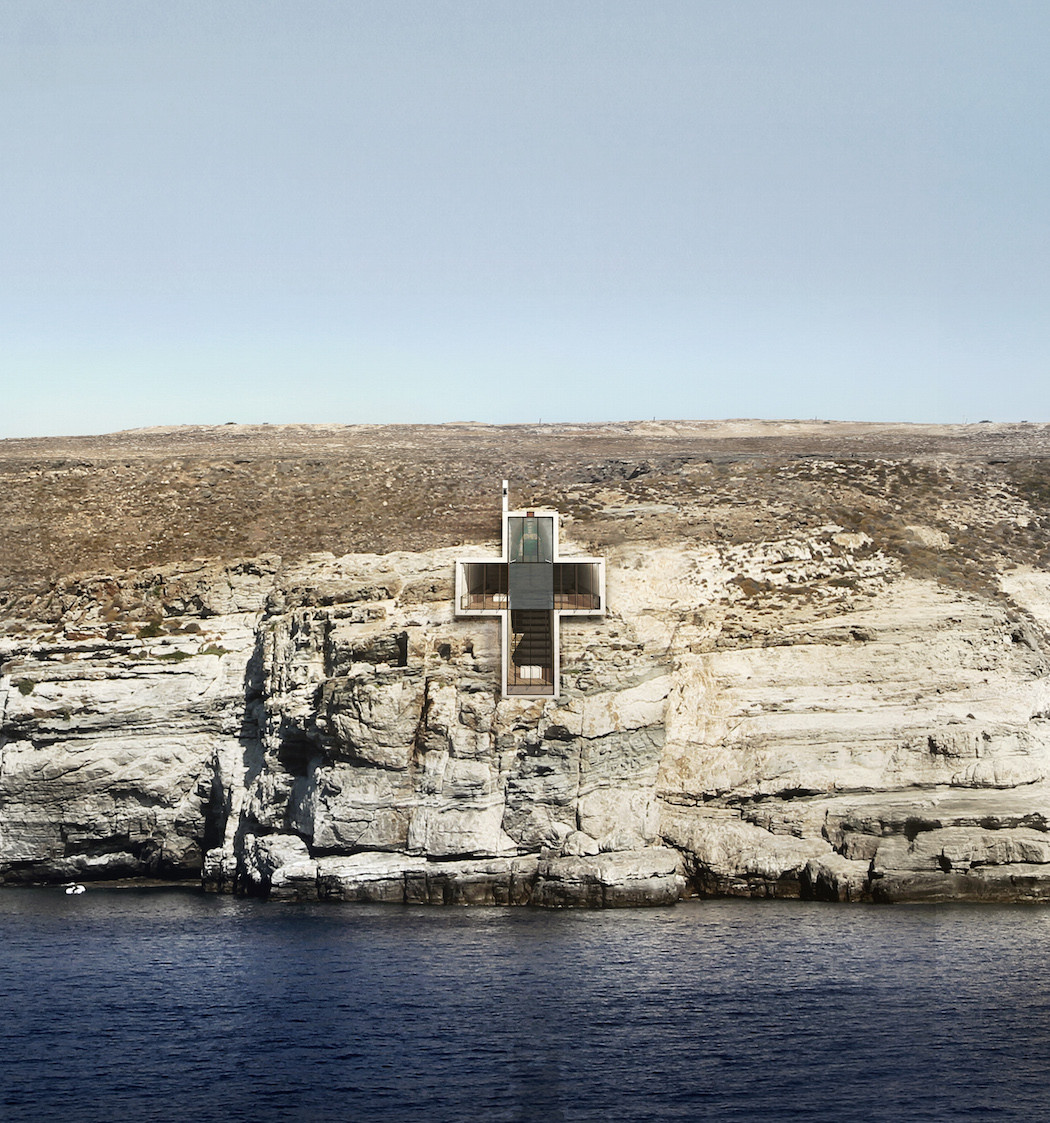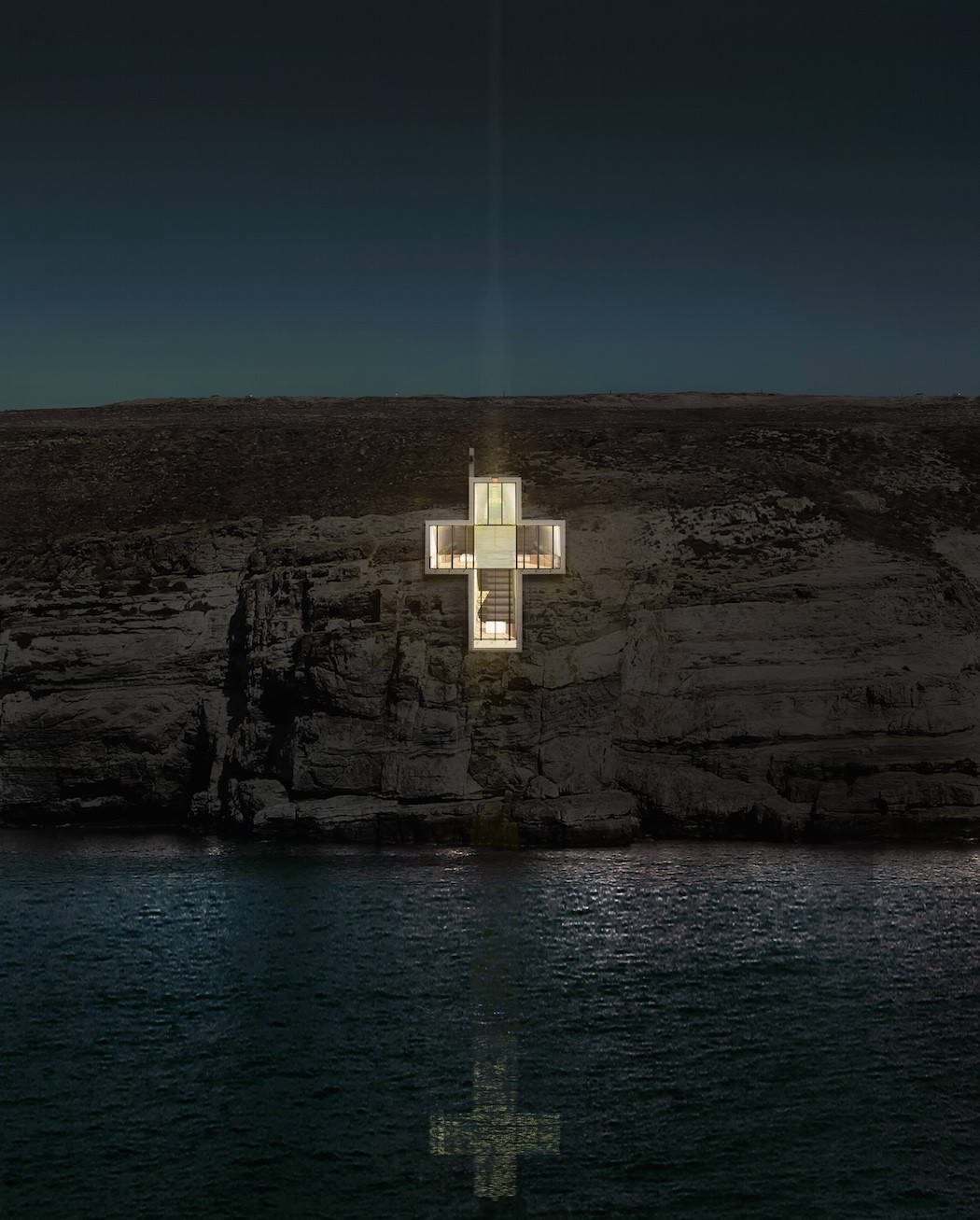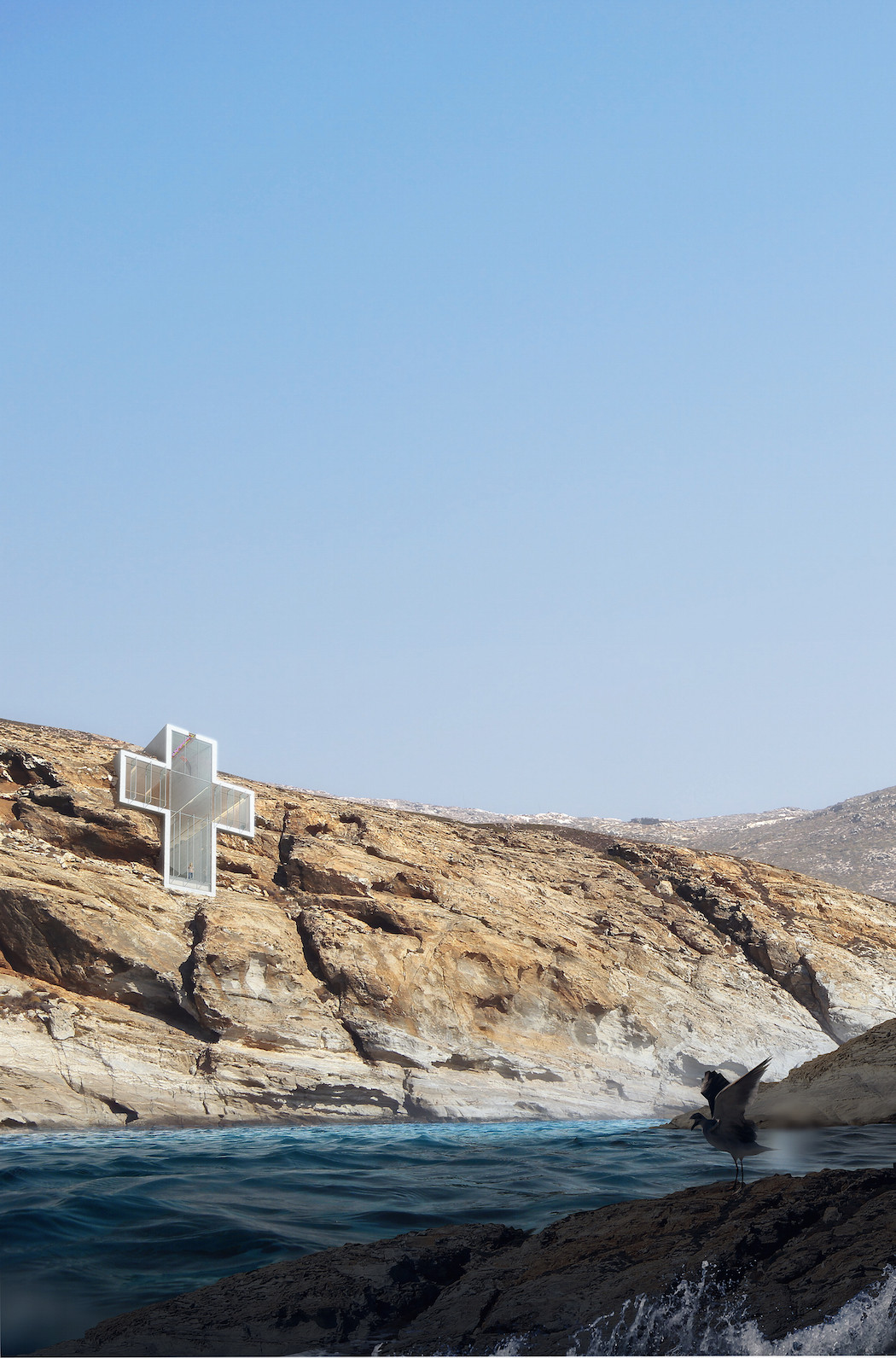At nighttime, the illuminated chapel is visible from a distance, functioning as a lighthouse for believers and travelers alike.
Through a minimalist design, the chapel of The Holy Cross on the island of Serifos in Greece symbolizes a timeless religious building. Facing the Aegean Sea, positioning the view to the sea, the single cliff facade built in a contemporary style both celebrates the simplicity and harmony of contemporary architecture, and acts as an interconnecting bridge between the past, the present and the future.
The Chapel of the Holy Cross is an unbuilt vision that seeks for an investor or ambitious contributors to finance its construction. As a unique platform for the communication between tradition and innovation, the project of the underground chapel of Holy Cross offers a challenging vision of innovative architecture. « At nighttime, the illuminated chapel is visible from a distance, functioning as a lighthouse for believers and travelers alike." explains OPA, the Greece based open architecture agency. « Eastern light penetrates the chapel through the front glazed façade and the tinted “vitreaux” glass that runs along the spine of the bulding, culminating to the western façade with the rotating wooden door. »
Constructed with simple materials such as wood, glass and concrete, the chapel’s form allows for the magnificent view and the game of light and shadow to take center stage. Organized in three levels, the chapel is defined by an extruded cross that creates the space. « The dynamic light patterns embrace the bare concrete with colorful refractions, a reverent homage to Le Corbusier’s “Ronchamp” church and Tadao Ando’s “Church of Light”. » says the design team unveiling their recent project. The idea of using the cruciform vertically, rather than horizontally, is one of the reasons that makes this project behind the specialty of this Chapel. According to some experts, a cross shaped vertical section has not been attempted before the Byzantine era.
Discover more architectural projects from OPA on their website.






